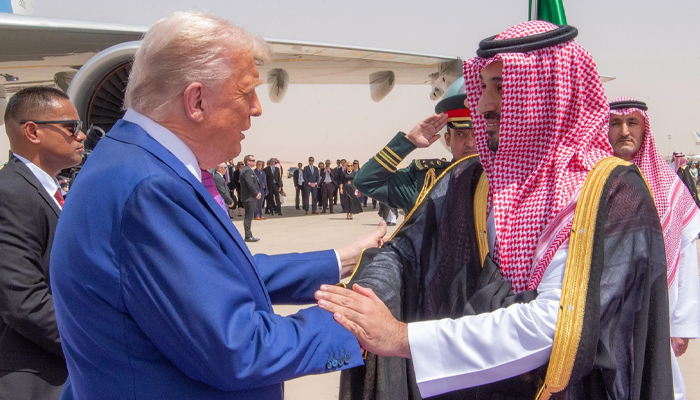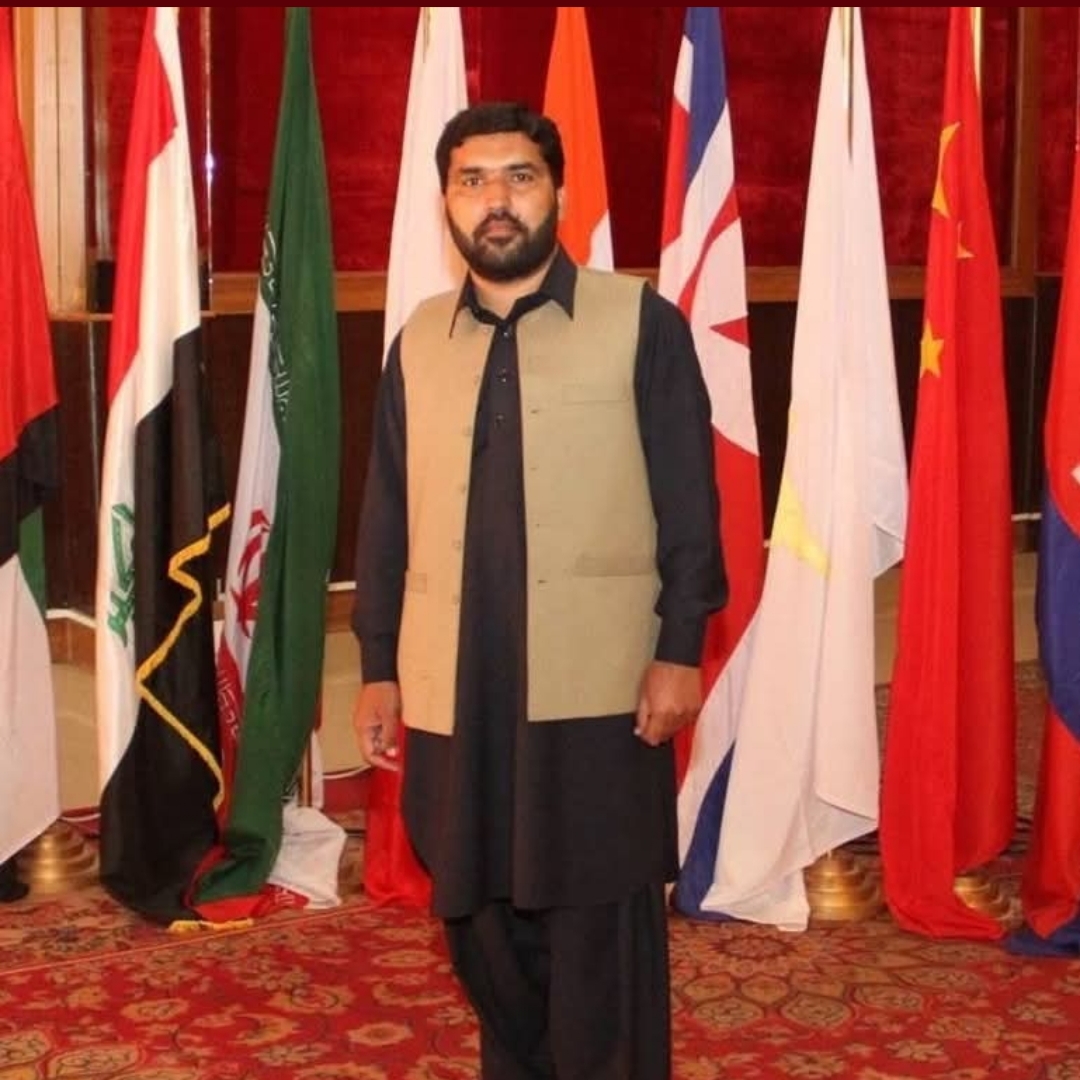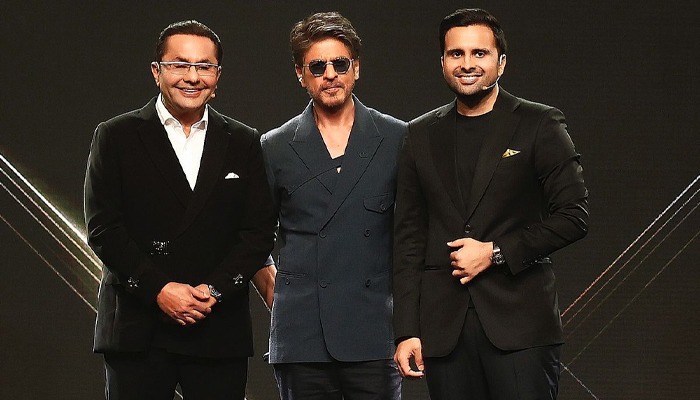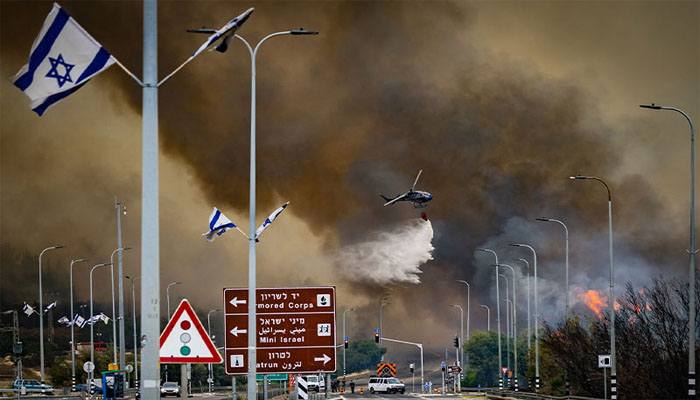Riyadh (PNP) – U.S. President Donald J. Trump arrived in the Saudi capital Riyadh on Saturday, marking the beginning of a pivotal four-day tour of the Middle East. This marks Trump’s first major international visit since returning to the White House, and is being closely watched by geopolitical analysts around the world. His arrival signals a new phase in American engagement with the Gulf region, particularly on issues concerning Iran, Gaza, and broader regional security.

Warm Welcome by Saudi Leadership
Upon landing in Riyadh, President Trump was warmly received by Saudi Crown Prince Mohammed bin Salman. In keeping with Arabian hospitality, he was offered traditional Arabic “qahwa” (coffee) and escorted with great pomp. The ceremonial welcome underscored the importance Riyadh is placing on this high-stakes visit.
Shortly after his arrival, President Trump held a closed-door meeting with Crown Prince Mohammed bin Salman. According to sources familiar with the discussions, the leaders exchanged views on the evolving security landscape of the Middle East, focusing heavily on Iran’s growing influence in the region and the ongoing humanitarian crisis in Gaza.
This visit, according to The Washington Post, is seen as a significant foreign policy step for Trump, who is keen on reshaping U.S. alliances and regaining momentum in the region after months of domestic political challenges and foreign policy stagnation.
A Strategic Tour Amid Security Concerns
President Trump’s itinerary includes visits to Qatar and the United Arab Emirates (UAE), key U.S. allies in the Gulf. These stops are not merely symbolic; they are expected to include substantive discussions on defense cooperation, counter-terrorism strategies, and trade agreements.
However, the tour is not without its controversies. U.S. intelligence agencies and defense experts have raised questions about a luxury jet reportedly gifted to Trump by Qatari authorities. Though no official confirmation has come from the White House, the matter has fueled concerns among national security circles in Washington about foreign influence and ethical oversight.
In this context, Trump’s engagements in the Gulf are being interpreted not just as diplomacy but also damage control. Analysts say that while the optics of state visits and military parades will dominate headlines, the real work lies in restoring trust among allies and defining clear policy stances on the region’s thorniest issues.
Iran in the Crosshairs
Perhaps the most critical agenda item during this visit is Iran. The Biden administration had previously attempted to revive the Joint Comprehensive Plan of Action (JCPOA), commonly known as the Iran nuclear deal. However, Trump has vocally opposed the agreement, both during his first term and after returning to office, calling it “a disaster that empowered a dangerous regime.”
In Riyadh, sources say Trump is pushing for a broader anti-Iran coalition, involving not just Saudi Arabia but also the UAE, Bahrain, and Israel. The renewed push comes in response to increasing concerns about Tehran’s missile development program, its alleged support for Houthi rebels in Yemen, and its political backing of Hezbollah in Lebanon.
In a press statement ahead of the visit, a senior administration official said, “The President is committed to working with regional partners to confront Iran’s destabilizing actions. We believe that collective pressure and strategic deterrence are key to ensuring long-term peace and security.”
Saudi Arabia has long advocated for a unified front against Iranian expansionism. Trump’s visit appears to align with that objective, potentially paving the way for a new defense pact or intelligence-sharing agreement among Gulf states and Washington.
The Gaza Crisis: Diplomatic Flashpoint
In addition to Iran, the situation in Gaza is high on the agenda. The region has witnessed a new wave of violence in recent weeks, with escalating clashes between Israeli forces and Palestinian militants. Civilian casualties have risen dramatically, prompting condemnation from international human rights organizations.
President Trump’s approach to the Israeli-Palestinian conflict has always tilted in favor of Israel. His administration previously recognized Jerusalem as Israel’s capital and moved the U.S. embassy there, a move that drew strong criticism from the Arab world. However, reports suggest that Trump may use this tour to recalibrate his stance by advocating for a humanitarian corridor in Gaza and pressing regional allies to fund reconstruction efforts.
Saudi Arabia, despite its historically cautious role in Palestinian affairs, is believed to be open to a more active role, especially if it strengthens its ties with Washington. Analysts believe that Trump may propose a regional framework that combines Arab financial support with U.S. diplomatic cover to bring calm to Gaza.
Trade and Economic Cooperation in the Spotlight
While security issues dominate the headlines, trade and economic collaboration are also high on the agenda. Trump’s delegation includes several high-ranking business executives and Treasury officials, signaling a renewed push for economic diplomacy.
Saudi Arabia and the UAE are two of America’s largest arms buyers. In recent years, U.S. defense contractors have signed multi-billion-dollar deals with these Gulf states, including fighter jets, missile defense systems, and surveillance technologies. Trump is expected to advocate for the expansion of these contracts, which are crucial both for regional security and American manufacturing jobs.
In addition, talks are expected around energy cooperation, particularly in the aftermath of volatile oil prices. With Saudi Arabia playing a dominant role in OPEC+ and the United States emerging as a key shale oil exporter, both sides have mutual interests in maintaining price stability and ensuring uninterrupted supply chains.
Economic cooperation may also extend to technology, cybersecurity, and artificial intelligence, areas where the Gulf countries are investing heavily as part of their post-oil diversification strategies.
A Diplomatic Balancing Act
Trump’s Middle East tour is being seen as a litmus test of his foreign policy 2.0 — one that seeks to reassert American influence while navigating a drastically changed geopolitical landscape.
Since his first term, the region has undergone major transformations. The Abraham Accords normalized relations between Israel and several Arab nations, Iran has deepened its ties with China and Russia, and intra-Gulf rivalries, such as the once-hostile stance between Saudi Arabia and Qatar, have largely thawed.
In this new environment, Trump faces the challenge of crafting a coherent policy that addresses both hard security threats and soft diplomatic pressures. His ability to manage competing interests — Israeli security, Palestinian rights, Saudi ambitions, and Qatari pragmatism — will determine the success of his visit.
A senior diplomat in Riyadh, speaking on condition of anonymity, remarked, “Trump’s visit could redefine U.S. engagement in the region. But much depends on how he handles Iran and Gaza — these are not just flashpoints, they’re fault lines.”
Public Reaction and Media Coverage
Arab and international media are giving extensive coverage to the visit, with live updates and expert panels dissecting every handshake and statement. Social media platforms in the Middle East are flooded with commentary, memes, and speculation — some praising Trump for engaging the region seriously, while others criticize him for past policies that, in their view, exacerbated regional tensions.
Protests have also been reported in parts of Lebanon, Iraq, and the Palestinian territories, where Trump’s presence in the region is being viewed with skepticism and anger.
What Comes Next?
The outcomes of President Trump’s Middle East visit are likely to unfold over the coming weeks and months. Potential deliverables include:
-
A joint communiqué condemning Iranian aggression
-
A humanitarian initiative for Gaza reconstruction
-
Expanded military sales and economic agreements
-
A proposed security framework involving Gulf nations and Israel
What remains uncertain is whether these agreements will translate into long-term peace and stability, or if they will merely paper over deeper divisions. Nonetheless, the significance of Trump’s visit cannot be understated — it signals America’s renewed appetite for influence in a region that remains both volatile and vitally important.
In Conclusion
As President Donald Trump continues his high-stakes Middle East tour, all eyes remain on the decisions that could shape the region’s future. Whether he succeeds in forging new alliances, de-escalating tensions, or cementing America’s leadership role, one thing is clear: the next few days will be critical in defining both his foreign policy legacy and the geopolitical trajectory of the Middle East.

Naeem Akhtar plays a key role in shaping editorial content and maintaining the highest standards of accuracy and clarity. His dedication ensures that PNP’s coverage remains timely, reliable, and impactful for its readers worldwide.


